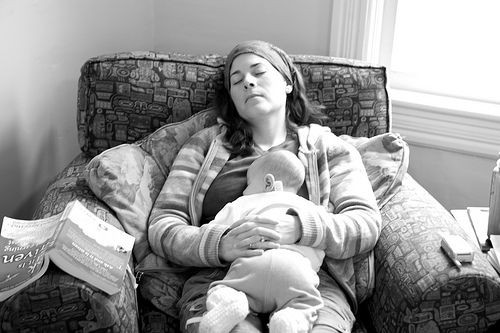Rate Of Postpartum Depression Nearly Twice As Great In Cities Compared With Rural Areas; Isolation Could Increase Risk

Women who spend their post-childbirth days raising children in cities could be nearly twice as likely to experience postpartum depression than mothers raising children in rural areas, a new study finds.
Researchers from Canada discovered that women who live in large cities displayed greater rates of depression following their pregnancy than women living in rural areas, a difference of 10 percent to six percent, noted lead researcher Dr. Simone Vigod, psychiatrist at Women's College Hospital in Toronto.
"Almost one in 10 women in urban areas is at risk for postpartum depression, versus one in 20 women in rural areas," she said. "Women in larger urban areas might be at higher risk due to social isolation. Cities also had larger populations of recent immigrants, and being new to a country can contribute to feelings of diminished social support."
The team's findings were published in the Canadian Medical Association Journal, elaborating that such feelings of isolation likely stem from additional sensations of being overwhelmed, unsupported, and unsure.
The team is also quick to dispel the idea that postpartum depression equates to less severe cases of the "baby blues." One estimate says up to 70 percent of women experience symptoms of baby blues within the baby's first week, yet postpartum depression extends well beyond that first week and includes symptoms far more severe. Whereas baby blues comprise sadness, irritability, and poor sleep habits, postpartum depression includes deep sensations of emptiness, disillusion, and overwhelming feelings of withdrawal — sometimes from both social and romantic relationships.
The Team's Study
Participants of the survey fell into one of four residence types. Those with at least 500,000 inhabitants were considered cities; semiurban locations had a population between 30,000 and 499,999 residents; semirural communities had fewer than 30,000 people and rural areas had fewer than 1,000 inhabitants.
The respondents' answers were then crosschecked against the prevalence of postpartum depression — using a score of ≥ 13 on the Edinburgh Postnatal Depression Scale — to judge where the greatest concentration fell.
"The prevalence of postpartum depression was higher among women living in urban areas than among those living in rural, semirural or semiurban areas," the team noted, adding that "in rural areas, there was a nonsignificant gradient of risk: women with less connection to larger urban centers were at greater risk of postpartum depression than women in areas with greater connection."
Perhaps the strongest risk factor among city-dwelling mothers is a lack of social support. Cities tend to be more isolated and individualized than rural areas, where community plays a much larger role in raising children. Mothers who would normally have extended family offering help are forced to be self-reliant.
To combat this problem in the future, Vigod first quieted assumptions that Canada was somehow qualitatively different than the United States.
"I think the individualistic culture in large urban areas is probably very similar in Canada and the United States," she said, explaining that both countries have large cities with people under stress.
Vigod also advocated broad, encompassing programs to reach out to new mothers — forestalling depressive symptoms being the primary goal moving forward.
"Prevention programs directed at modifiable risk factors (e.g., social support) could specifically target women living in these areas to reduce the rates of postpartum depression," the report states.



























